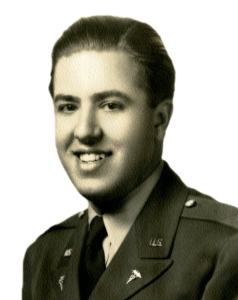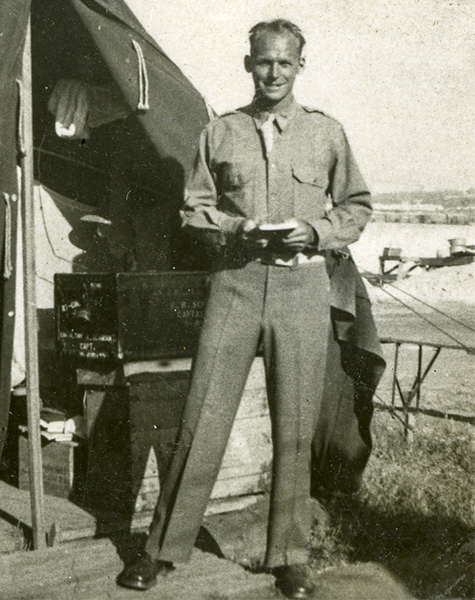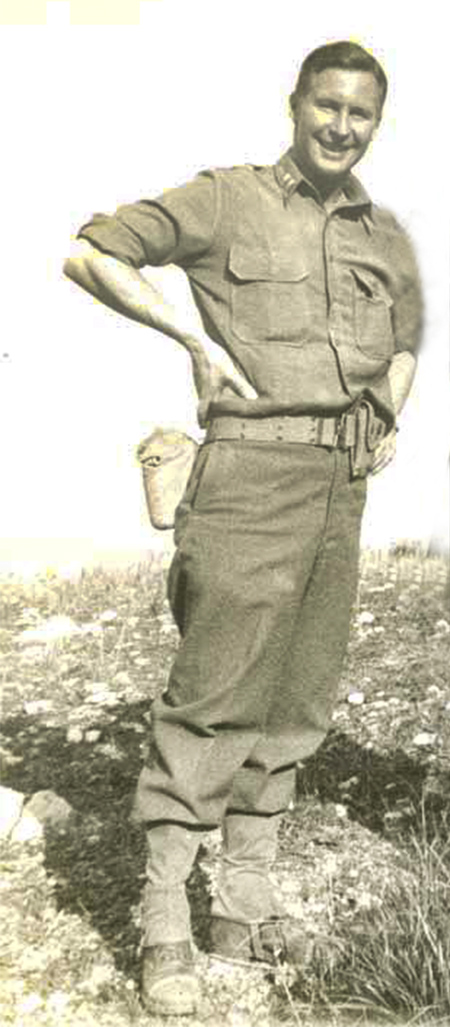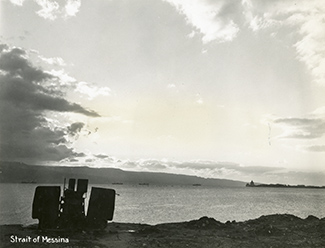April 1, 1944
During March several groups of officers took recreational trips around the island of Sicily. Chuck Schwartz and I took the trip together, which included five days. We started east along the northern coast passing through many of the former scenes of the Sicilian campaign.
Hardly a railroad or vehicle bridge was left intact by the retreating Germans. Here and there along the coast a beached landing craft gave evidence of “end-run” invasion tactics. Strafed and burned railroad cars littered the stations and disabled tanks lined the streets, both our own and those of the enemy. It made me feel just a little weak in the stomach to realize that some of our boys who manned those tanks will never return to their native land. An American military cemetery near San Stefano also brought forth the same feeling, multiplied many fold.
Most of the northern coast is quite beautiful. The shoreline in all but a few areas is rock and steep and the mountains rise abruptly a short distance back from the water’s edge. It was quite a thrill to sight the toe of Italy across the Strait of Messina, most similar in appearance to looking over at Sausalito from San Francisco.
We took a short side-trip over to Reggio in Italy, an act that precipitated a familiar question on the part of the British Captain in charge of the over-burdened transportation facilities, “Say, don’t you American chaps know there’s a war on?” I must confess I felt somewhat ashamed. Reggio was little different from Sicilian towns – a little cleaner perhaps, in the sections we saw. Oxen seem to have replaced the familiar little burro of Sicily.
Messina is quite a beautiful town in the modern section, with wide spacious streets and fine looking buildings. However, the older sections are typically filthy and crowded. The waterfront area and railroad yards are practically leveled by bombs. As usual, the Fascist state buildings and the churches are by far the most pretentious.
From Messina (the highlight of which was White Horse Scotch at 7 lire a drink at the British Officers Quarters) we drove south along the east coast to Taormina, a beautiful little resort town set high on the rocky sea shore with a beautiful view of Mt. Etna.
Farther south we passed through Catania, now under British control, as is the entire east coast. It is interesting that our Italian “co-belligerants” in this area wear British uniforms. It was truly good for the soul to see that Uncle Sam is not the only Santa Claus in this crazy world, and quite surprising I might add.
Just south of Catania in the low level fields there are innumerable relics of the now well-known battle for Catania – tanks, German “88” guns, abandoned enemy equipment of various types. From Catania we drove on to Syracuse. The country in this part of the island is much more favorable to agriculture than in the north. Orange, lemon, olive and almond orchards stretch for miles over low rolling foothills. Along the coast we could see numerous large convoys making their way to Italy.
Syracuse was notable for its historic Greek Theater, Roman Coliseum and awe-inspiring ancient quarries known as Latomias. We were more impressed than our GI driver, who summed them up as “Just another pile of rocks.”
After leaving Syracuse we headed southwest through Ragusa, Comiso, and Gela and there again saw evidence of battle, and here again fertile fields and extensive vineyards. Asphalt and sulfur mines are also located in this vicinity, although not very active at this time.
From Gela we started inland, passing through Enna, a cold, damp, crowded city perched on a hilltop above the fog.This inland section is the “breadbasket” of the island. It was a beautiful sight to behold the rolling fields of wheat and realize that the island will again become self-subsistant. In spite of the roominess of the country, the gregarious inhabitants live in their typically crowded, narrow, damp, unpaved filthy streets, usually on the hillside.
From Enna we drove back to our starting point, Palermo.
.





